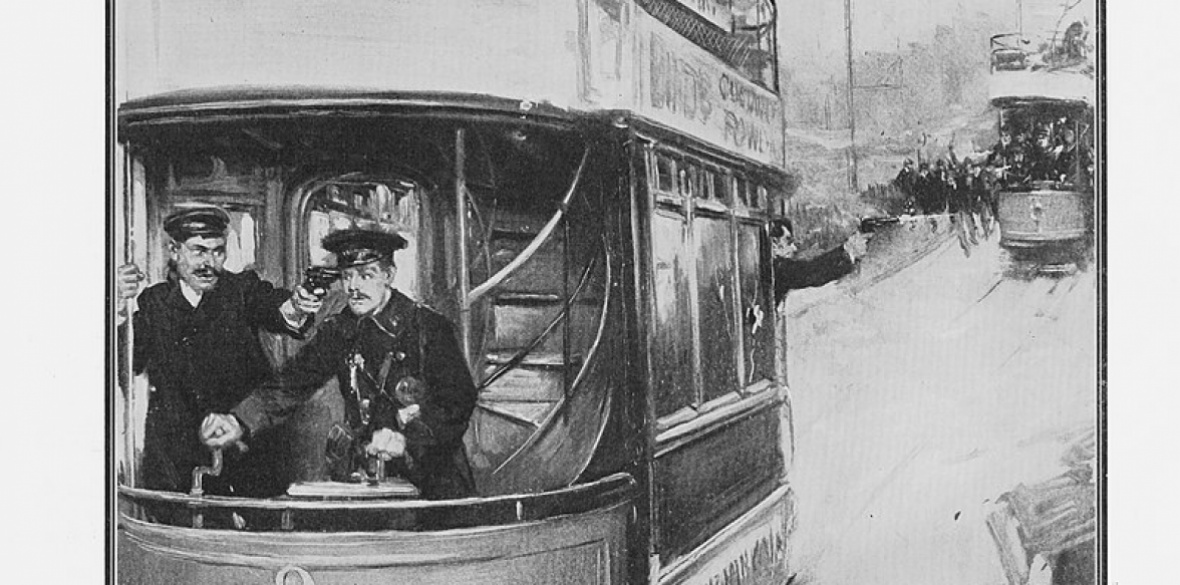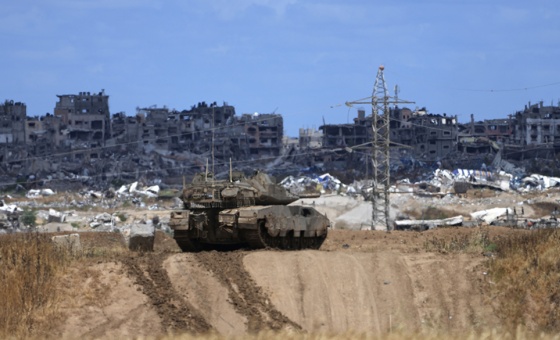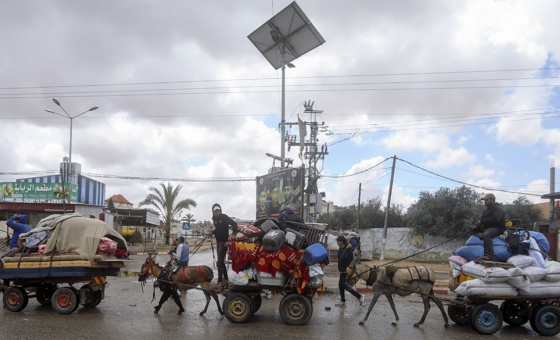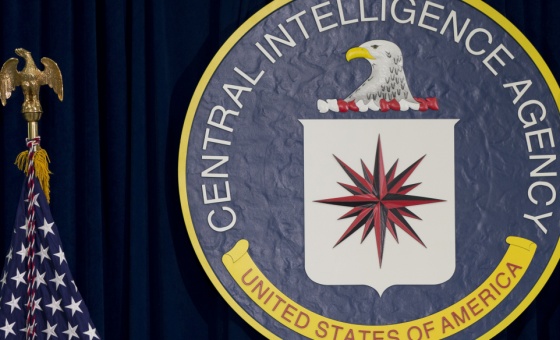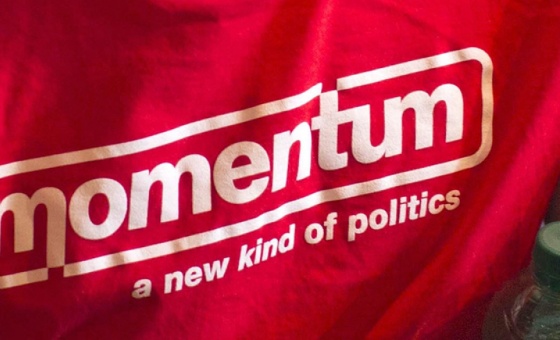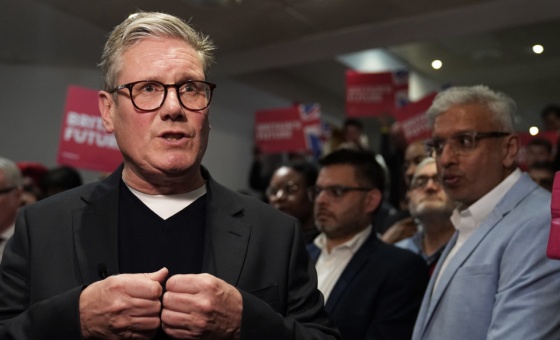This is the last article you can read this month
You can read more article this month
You can read more articles this month
Sorry your limit is up for this month
Reset on:
Please help support the Morning Star by subscribing here
OFTEN, when I am deciding what to choose as the subject of my Ramblings, I have a difficult choice to make.
Should I write something about wildlife and the environment? About transport? Should it be somewhere interesting to visit? Or perhaps some interesting, if little known, incident of labour movement history?
This week I’m going to attempt all of them in one go. You’ll need to hold on tight because we start with one of the most dangerous tram rides of all time.
Our story starts in January 1909 in Tottenham. Two Latvian socialist emigres from the Russian empire had decided to finance their work smuggling revolutionary literature into Russia by robbing a local factory payroll.
Paul Helfeld, just 21, and Jacob Lepidus, 25, were part of a huge community of Russian exiles that had given Edwardian Tottenham the nickname Little Russia.
In 1905 the British government passed the Aliens Act in an attempt to reduce this immigration. Some things never change.
The Times described Lepidus’s brother Paul as a “member of a notorious Russian revolutionary family.”
On May 1 1907 Paul Lepidus was killed when a bomb he was carrying to assassinate the president of France exploded prematurely.
On January 23 1909 Helfeld and Jacob Lepidus waited outside the Schnurmann rubber factory. At the same time every week the boss’s chauffeur, Joseph Wilson, drove to the bank with Albert Keyworth, a 17-year-old office boy, to collect the week’s wages — £80 in gold, silver and copper coins.
When they returned to the factory Keyworth, carrying the bag of money, was grabbed by Lepidus. Helfeld drew his pistol and shot at the chauffeur.
Two policemen, Tyler and Newman, at the police station just across the road heard the shots and gave chase.
As the gunmen ran down the street, several off-duty policemen and members of the public on foot and on bicycles joined the chase.
One policeman borrowed a pistol from a member of the public and returned fire. Ralph Joscelyne, a 10-year-old boy, and PC Tyler were fatally wounded.
Helfeld and Lepidus crossed the railway line and followed the River Lea, crossing at Stonebridge Lock.
They continued along the south side of Banbury Reservoir and then on Chingford Road, they amazingly boarded a number nine tramcar.
Lepidus threatened the conductor, telling him to drive. Most of the passengers leapt from the tram. Lepidus kept his pistol trained on the conductor, while Helfeld shot at the pursuers.
The police commandeered another tram and no fewer than 40 constables leapt aboard. Between Helfeld and Lepidus and the police over 400 shots were fired on the brief but exciting tramcar chase.
The pair jumped off the tram to seize a horse-drawn milk float. When that overturned they grabbed a grocer’s delivery cart. Lepidus whipped the horse while Helfeld shot at pursuers.
Two policeman, one armed, took over a civilian motorcar to continue the chase. The two Latvian Jews soon abandoned the slow cart and ran off on foot.
Finally, realising their hopeless fate, both shot themselves. Lepidus died instantly, Helfeld died some days later in hospital.
The Daily Mail editorial attacked the Aliens Act, blaming it for making it too easy to enter the country. That would never happen today.
The Metropolitan Police announced that the events had “provoked some misplaced public anti-semitism.”
This would be reflected two years later in the notorious Siege of Sidney Street. Strangely the money from the robbery was never recovered.
Sadly trams no longer run from Tottenham to the Walthamstow reservoirs but they are still worth a visit because from October 20 the reservoirs, as well as continuing to provide much London with water, will become Europe’s biggest user-friendly wetland nature reserve.
What will be known as Walthamstow Wetlands is a beautiful and tranquil open space. The 10 reservoirs are already an internationally important refuge for water birds such as pochard, shoveler and gadwall and provide an important stopover for migrating birds.
You will see herons, kingfishers, swans, cormorants and a myriad of other water birds as well as butterflies, dragonflies, rare mammals and waterside plants.
Two examples of industrial heritage have been renovated. The 1885 engine house is now a visitor centre, cafe and education space with a special tower for nesting swifts and roosting bats.
The Grade II listed Coppermill Tower has an accessible viewing platform overlooking the wetlands, with views over the city beyond.
Labour leader of Waltham Forest Council, Clare Coghill, told the Morning Star: “Walthamstow Wetlands is a unique space just 15 minutes from central London.
“We feel very fortunate to have this fantastic oasis on our doorstep and are so pleased that members of the public are now able to experience this fantastic open space in urban London.”
Walks here are wheelchair and buggy friendly and entry to the wetlands is free, as are many weekly activities and seasonal events.
While you are in Walthamstow you won’t want to miss the museum dedicated to the great socialist thinker, artist and designer William Morris.
The William Morris Gallery is housed in a 1740s Georgian house, in Lloyd Park, Walthamstow. The grade II* listed building was Morris’s family home from 1848-56.
Morris spent his formative years, from 14 to 22 here with his widowed mother and his eight brothers and sisters.
It was here, in the tall window on the main staircase, that Morris wrote some of his earliest poetry. His lifetime friend Edward Burne-Jones, visited and painted studies of the trees on the island.
For more information about Walthamstow Wetlands visit www.walthamstowwetlands.com.

